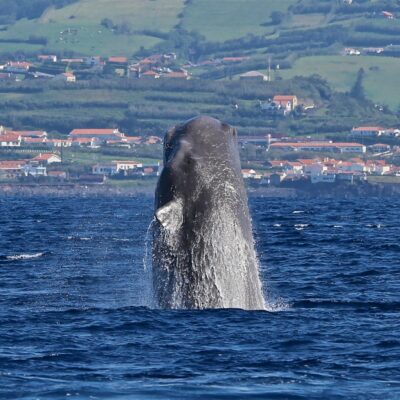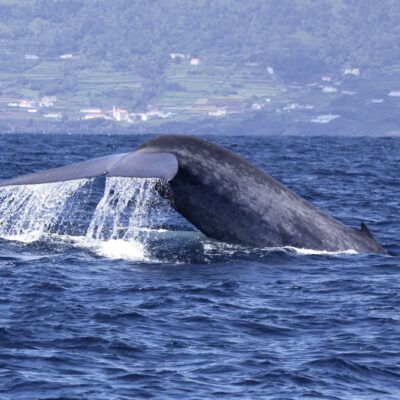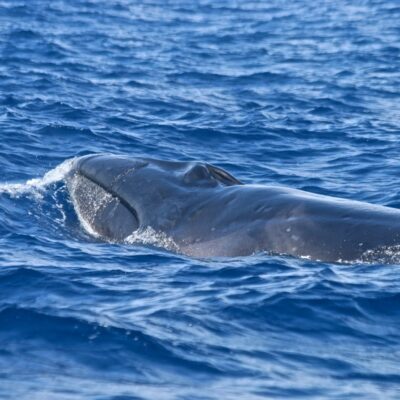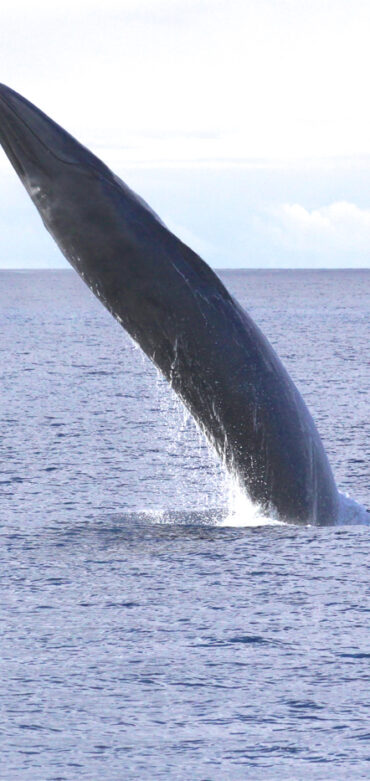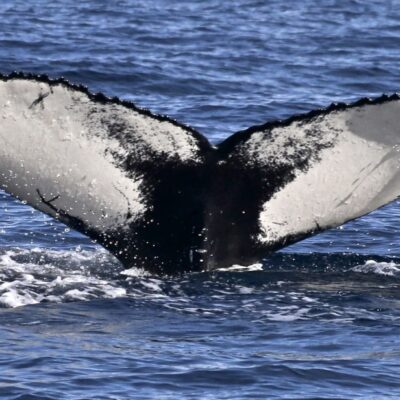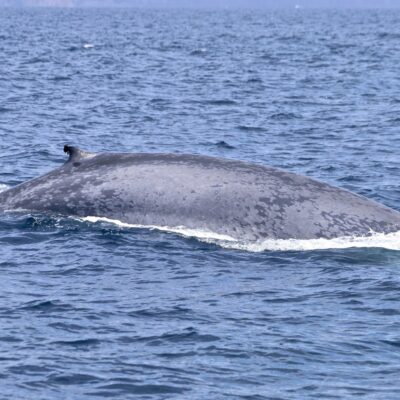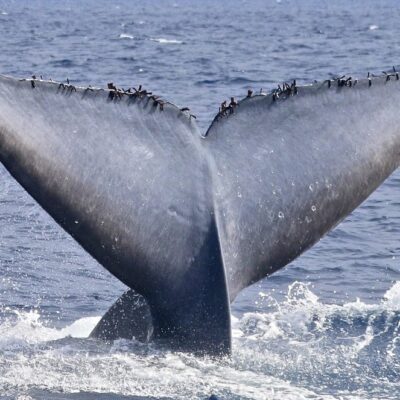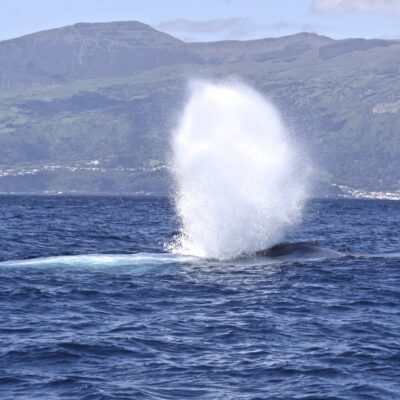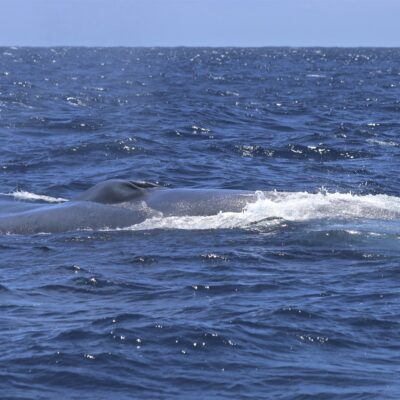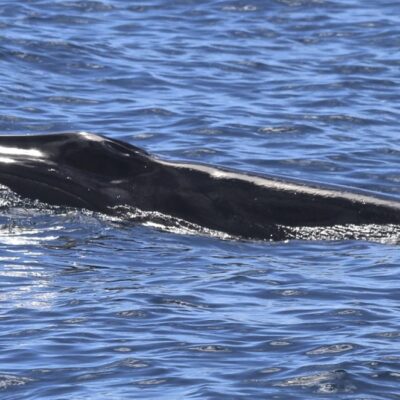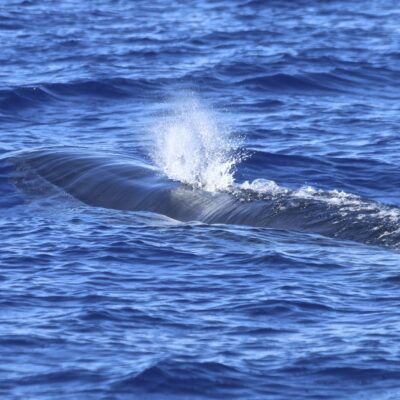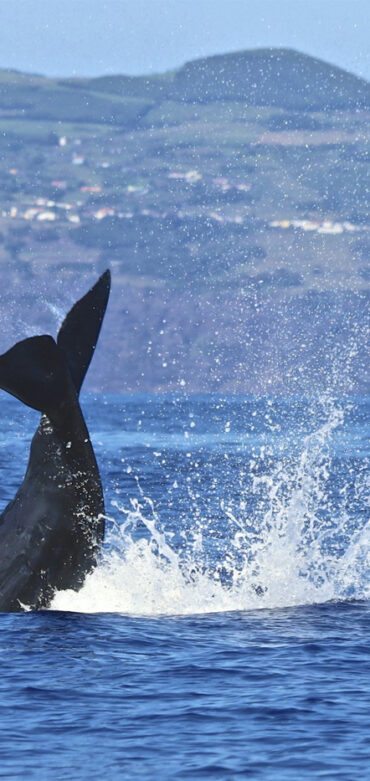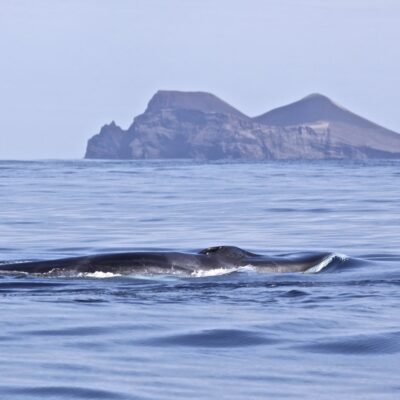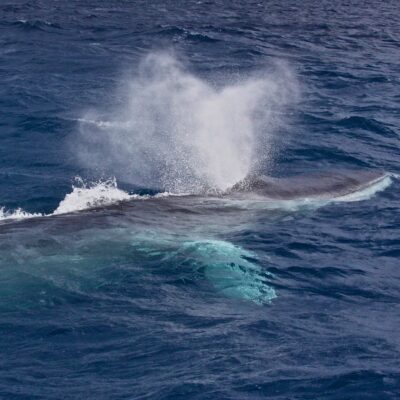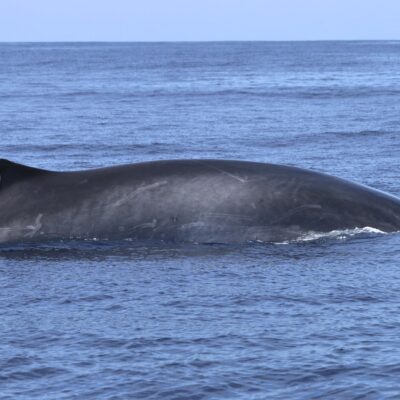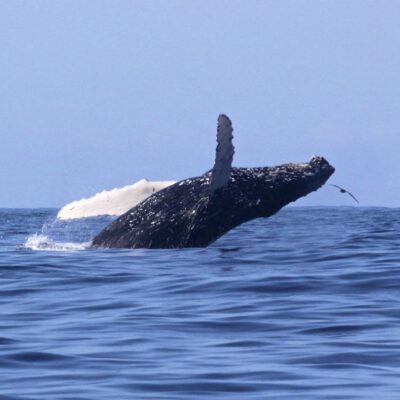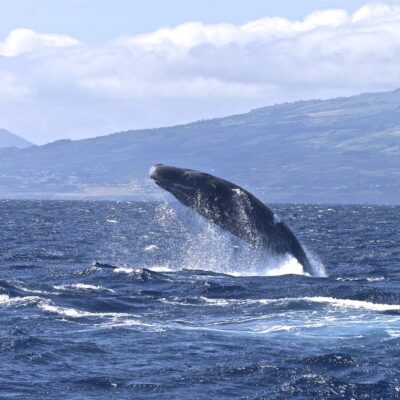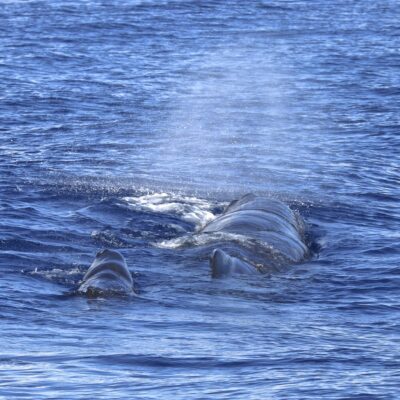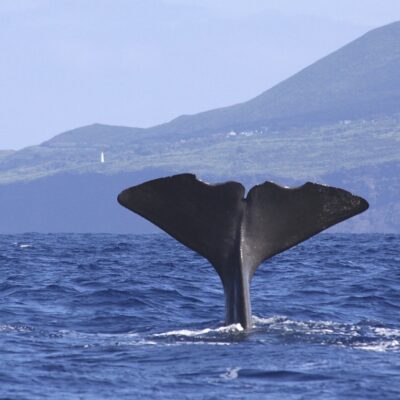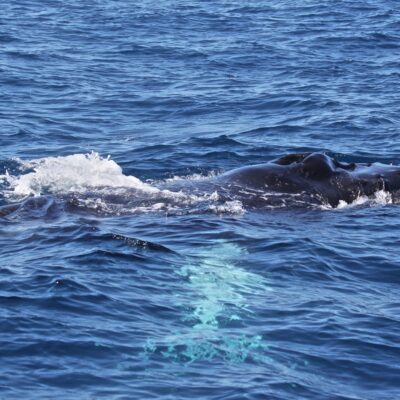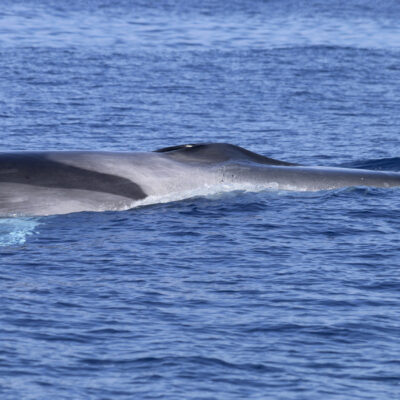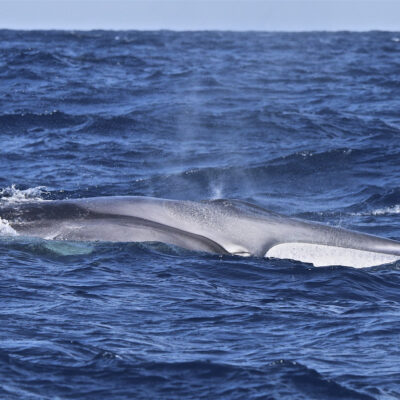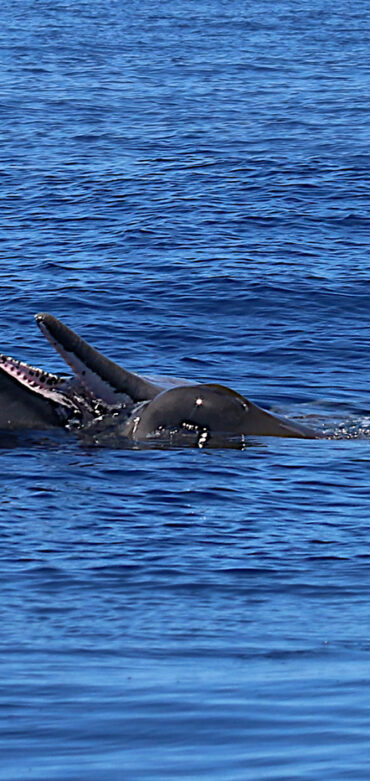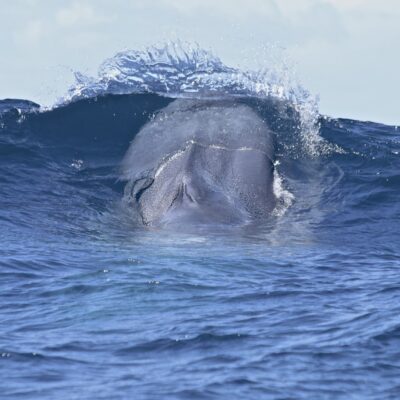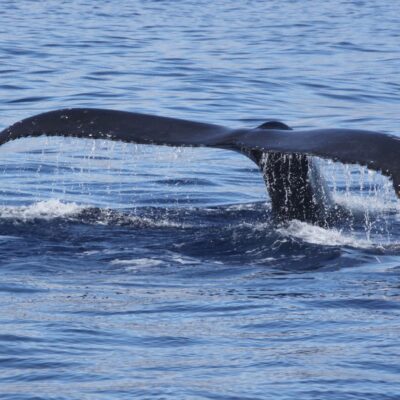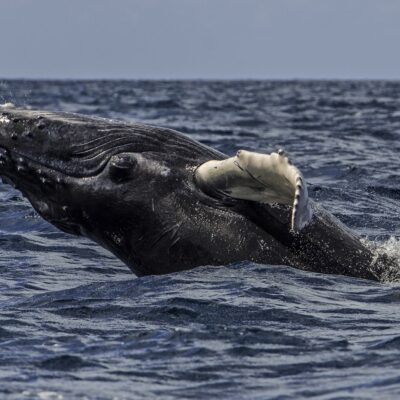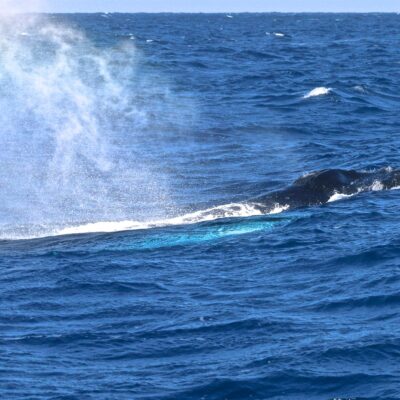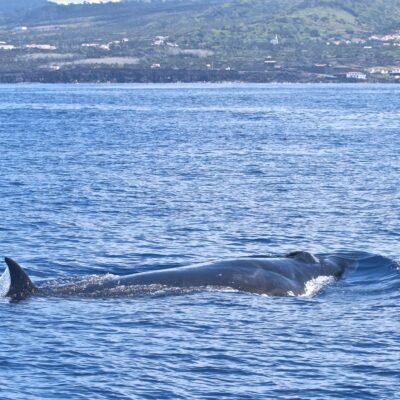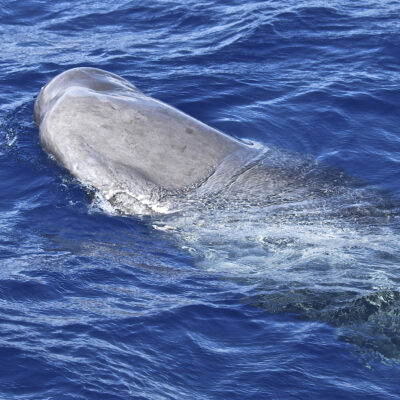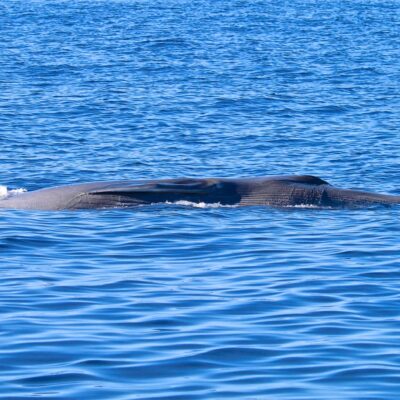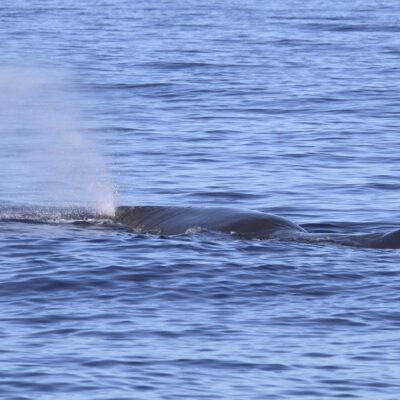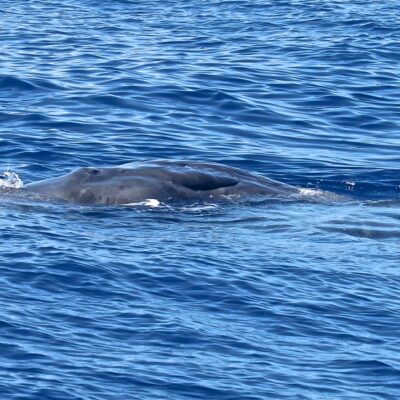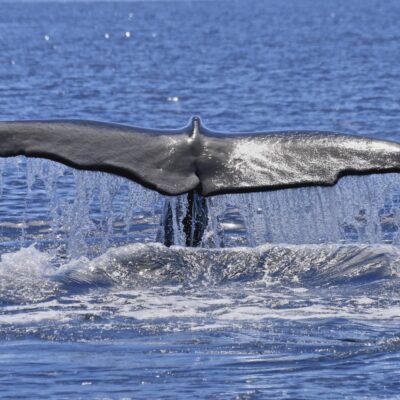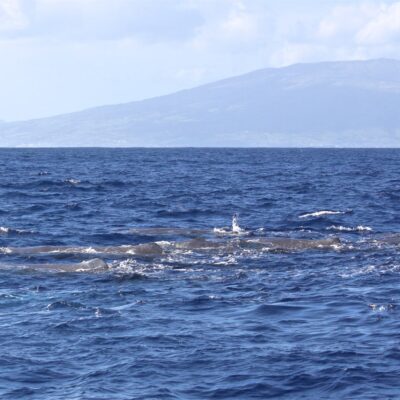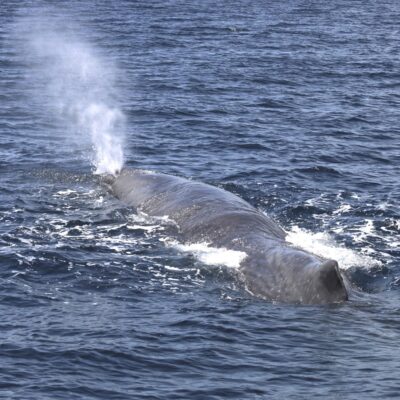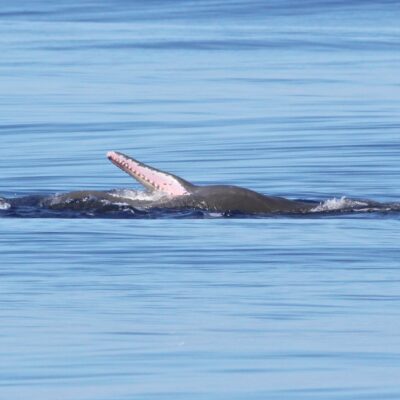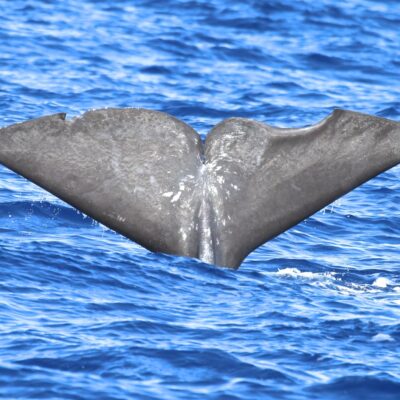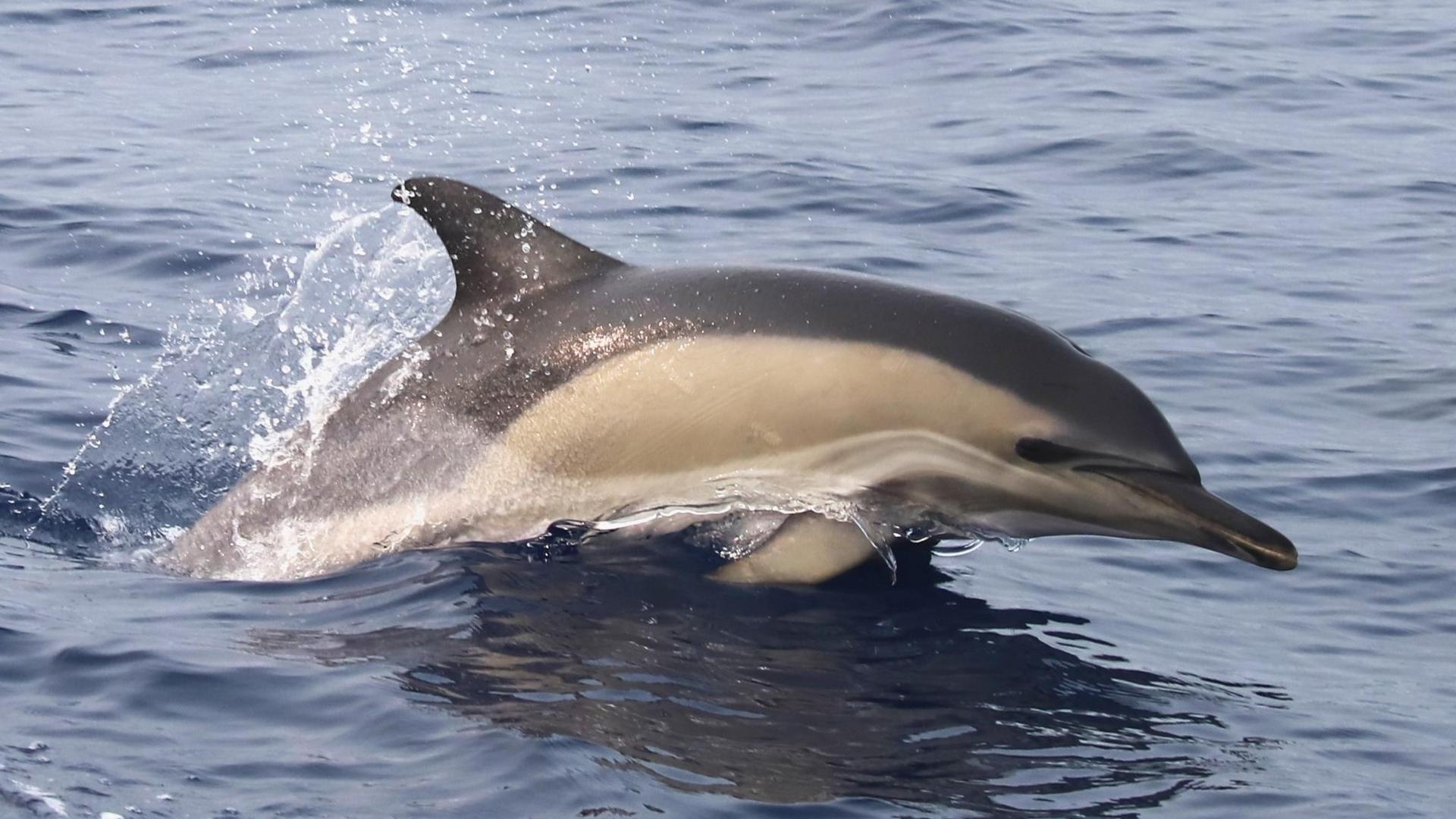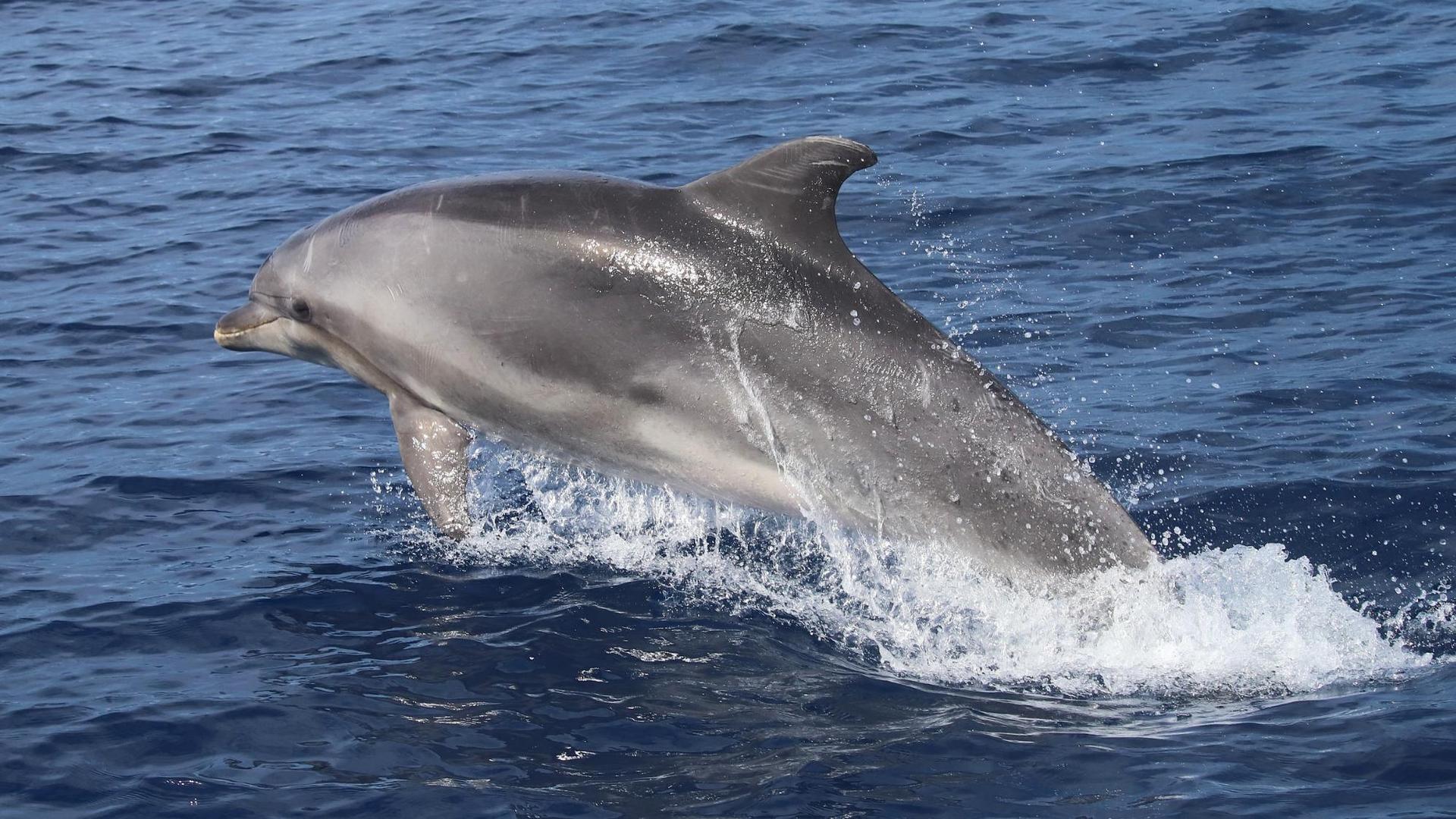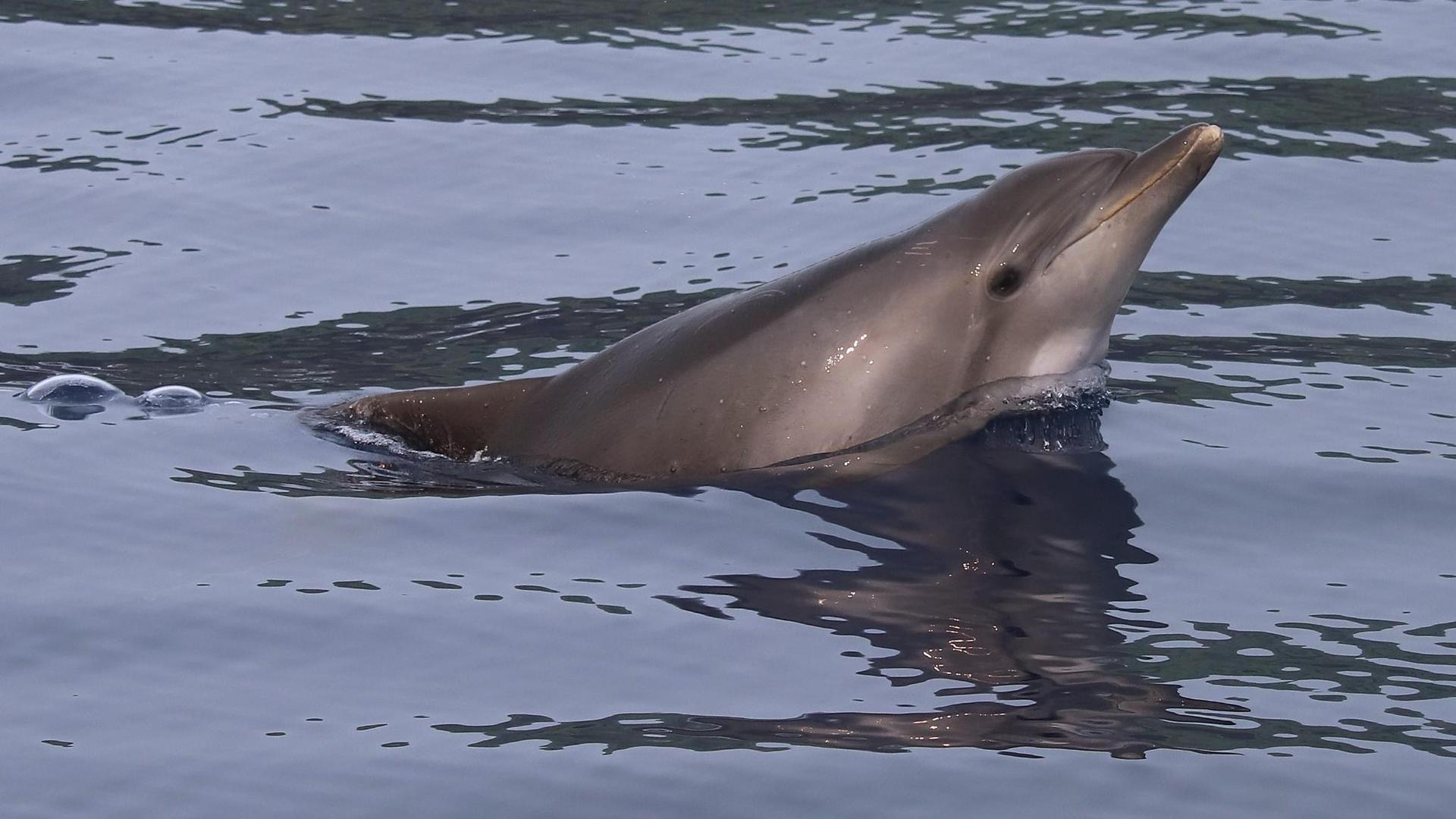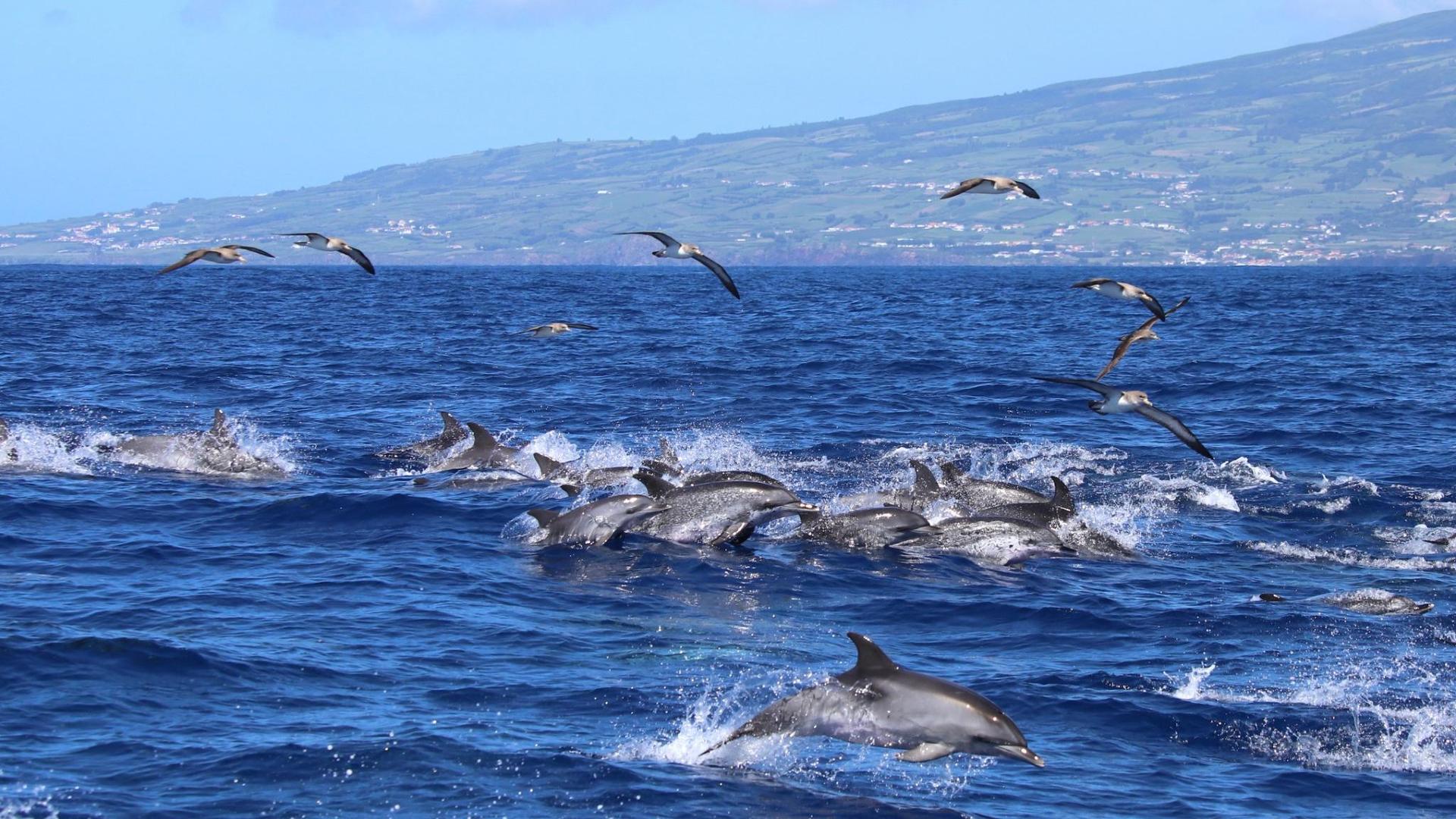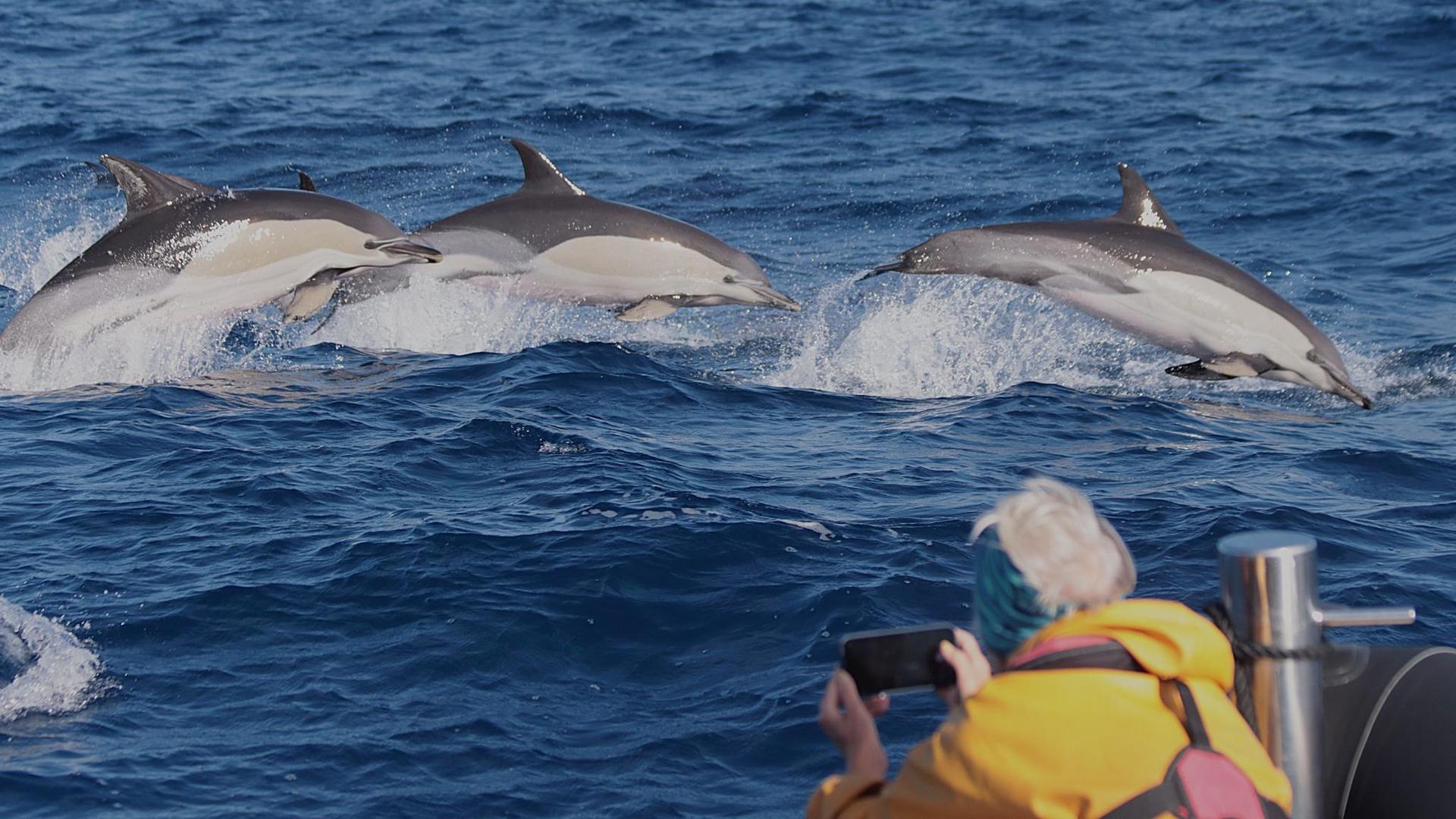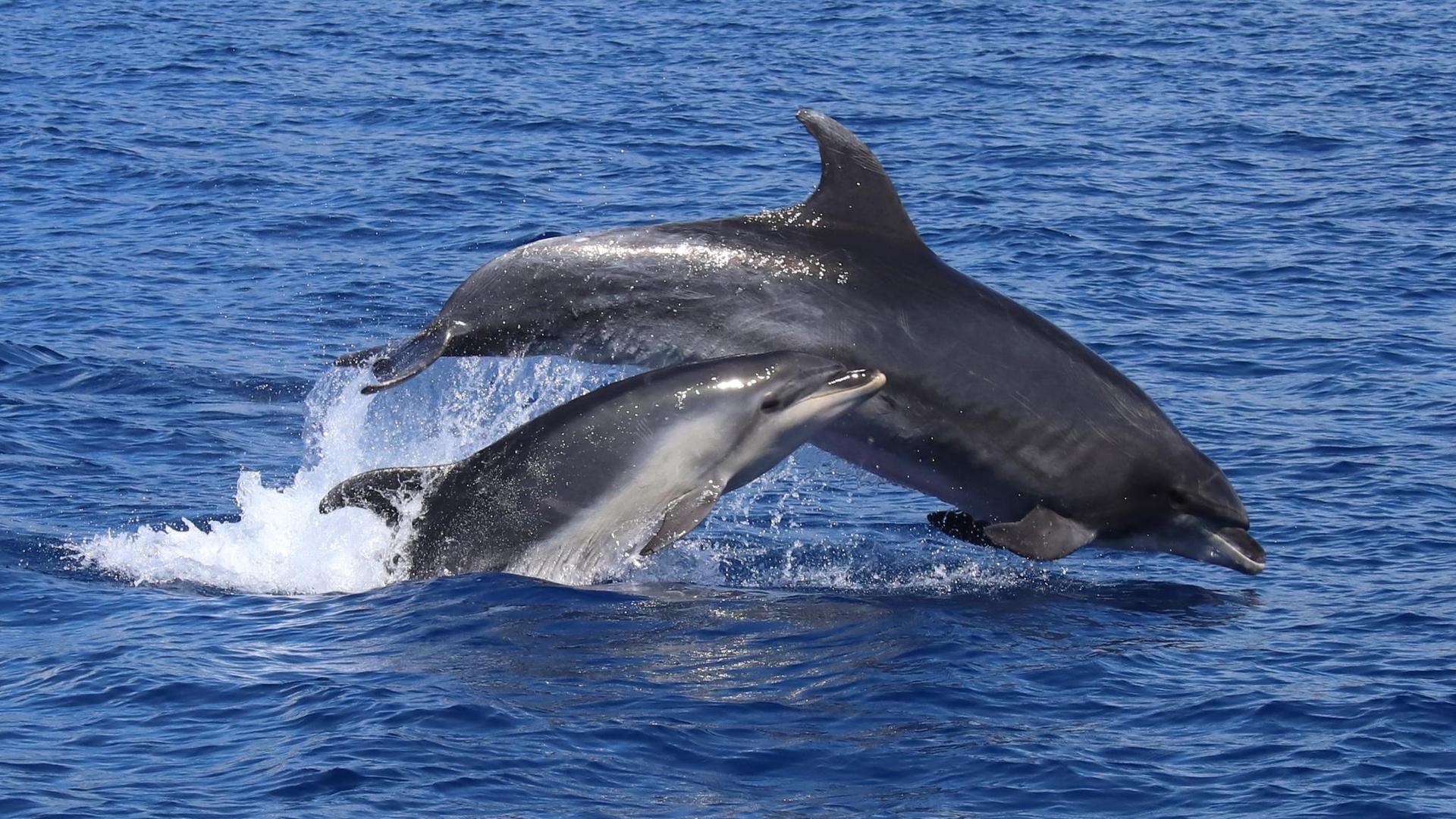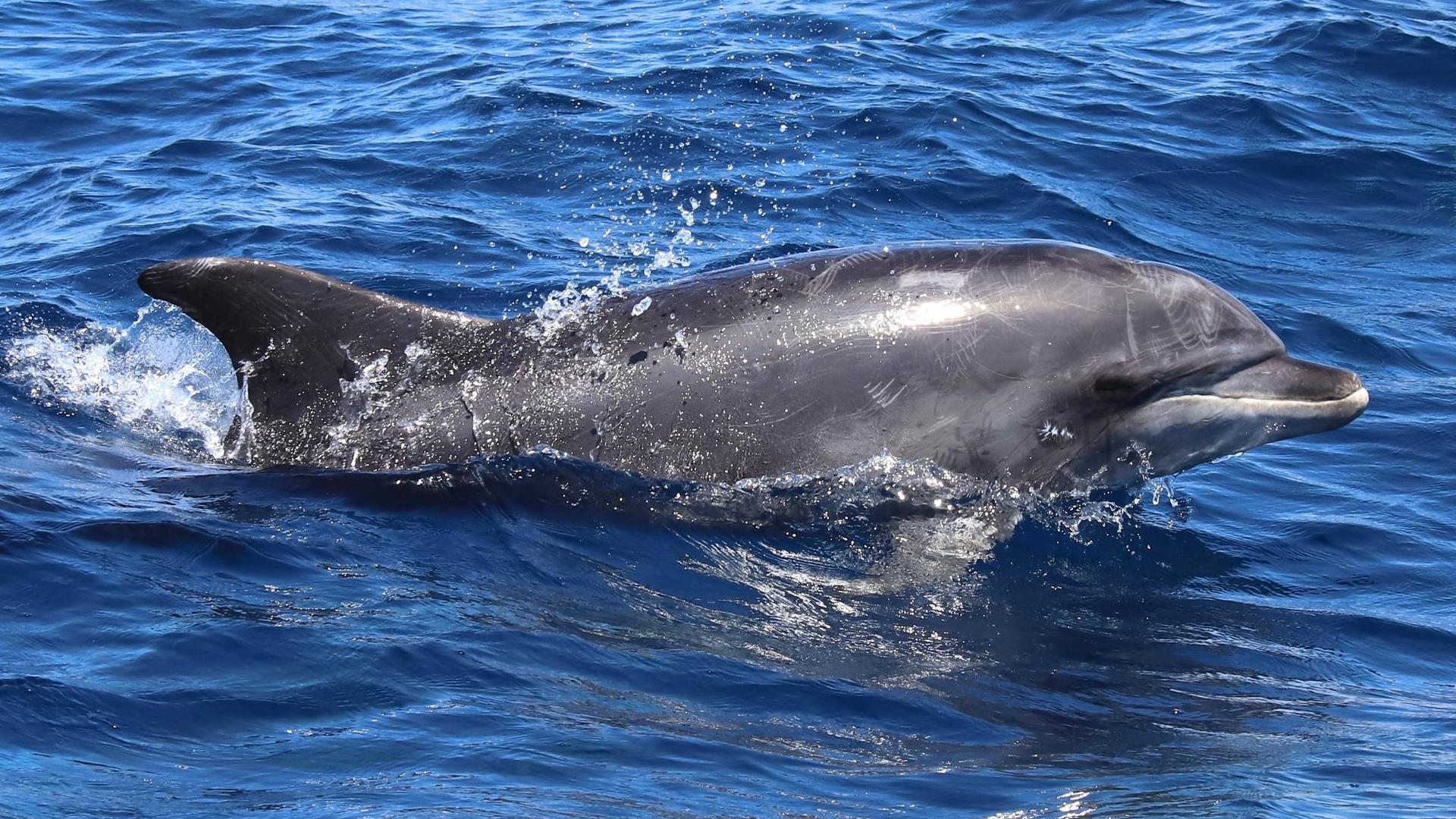SPECIES GUIDE
There are 93 species of whales, dolphins and porpoises, known collectively as 'cetaceans'. From the enormous blue whale to the unique Risso’s dolphin, you will find information and amazing facts about the Azores most common whales and dolphins in our species guide.
Owners of the largest brain and the most powerful sonar in the animal kingdom, sperm whales are among the deepest diving cetaceans, diving to depths up to 2000m to prey on squid and fish.
- Largest toothed whale
- Longevity: 90 years or more
- Most sexually dimorphic cetacean: adult female 10-11m 15 tons; adult males 15-18m, 50 tons
- Newborn 3-4m at birth
- Females live in families with their young, remaining in tropical and temperate waters year round; mature males tend to be solitary, roaming more widely in search of food, but return to warm waters to socialize and mate with the groups of females
- Occurrence in Azores: most abundant in offshore deep productive waters (+1000m) during spring and summer months
Owners of the most powerful, and the deepest, voice of the animal kingdom (17-20Hz); blue whales possibly hear each other and potentially communicate across entire ocean basins.
.- Largest animal that ever existed
- Longevity: 90 years or more
- Avg. length 20-28m; females larger than males
- Avg. weight 100-150 tons
- Newborn 7m at birth
- Present in all oceans
- Seasonal migrations to subpolar feeding grounds in summer, returning to lower latitudes to calve in winter
- Movements highly variable, with food availability probably dictating their distribution
- Usually found singly or in pairs
- Feeds on krill
- Occurrence in Azores: February to May
The Sei whale can be easily confused with the closely related Bryde’s whale. Its name comes from the Norwegian seje, meaning Pollack (coalfish), a member of the codfish that sei whales prey while in Norwegian waters.
.- Third largest whale
- Longevity: more than 70 years
- Avg. length 15-20m; females larger than males
- Avg. weight 20-30 tons
- Newborn calf 4,5m at birth
- Present in all oceans
- Highly oceanic, tends to stay in deep water
- Seasonal migration to subpolar feeding grounds in summer, returning to lower latitudes to calve in winter
- Usually found in groups of 2-6
- Feeds on krill, small schooling fish and squid
- Occurrence in Azores: May and June; in some years, occasional sightings in summer
Bryde's whales closely resemble their close relative the sei whale and can be easily confused with it at sea. They are named after Johan Bryde, a Norwegian who built the first whaling stations in Durban, South Africa in the early 20th century.
.- Avg. length 14,5-15,5m; females larger than males
- Avg. weight 13-28 tons
- Longevity: 70 yrs
- Newborn calf 4 m at birth
- Occurs worldwide in productive warm temperate and tropical waters
- Found individually or in pairs; aggregations up to 20 animals in good feeding areas
- Feeds on small schooling fish (e.g. anchovy, mackerel), krill and cephalopods
- Occurrence in Azores: August and September
Singing some of the longest and most complex songs in the animal kingdom, humpback whales are masters of melody. As if that wasn’t impressive enough, they also undertake some of the longest migrations of any mammal in the world.
.- Longevity: more than 50 years
- Avg. length 11-15m; females larger than males
- Avg. weight 25-30 tons
- Newborn calf 4,5m at birth
- Present in all oceans
- Highly migratory, with some animals covering over 11,000 km annually between their high-latitude summer feeding grounds and winter calving grounds in the tropics
- Known for complex whale songs, acrobatic displays and bubble-netting
- Usually found singly or in groups 2-3
- Feeds on krill and small fish
- Occurrence in Azores: winter and spring
Fin whales are one of the fastest of the large whales and can reach speeds of 25 knots, being known as the greyhounds of the ocean.
.- Second largest animal on Earth
- Longevity: 80 years or more
- Avg. length 18-26m; females larger than males
- Avg. weight 30-80 tonss
- Newborn calf 6m at birth
- Present in all oceans
- Seasonal migration to summer feeding grounds in higher latitudes; in the North-Atlantic fin whales may winter in higher and mid latitudes due to the influence of the Gulf Stream
- Usually found singly or in pairs
- Feeds on krill and small schooling fish
- Occurrence in Azores: February to June; in some years, occasional sightings in July and August
- One of the most abundant dolphins
- Avg. length 1,8-2,4m; males slightly larger than females
- Avg. weight 70-110kg
- Longevity: 35 yrs
- Very active and acrobatic
- Found in offshore warm-temperate and tropical waters worldwide
- Usually in pods of 10–200, occasionally several hundreds or even thousands
- Feeds on squid and small fish; foraging dives to 200m
- Often in association with shearwaters and other dolphins
- Occurrence in Azores: all year-round
The striped dolphin is one of the most abundant dolphins in the world, and can be easily identified at sea by its distinctive black stripe. Coloration of this species is complex and may vary by individual and geographic location.
- Avg. length 2,2-2,4 m, males slightly larger than females
- Avg. weight:90-150 kg
- Very active (chin slaps, roto-tailing)
- Longevity: 60yrs
- Found in tropical, subtropical and warm temperate oceanic deep waters
- Usually in large pods of 10-500; often associates with common dolphins
- Feeds on small fish and squid; foraging dives to 200-700m, mostly at dusk or early night
- Occurrence in Azores: all year-round
Two ecotypes described, the inshore (coastal) and the offshore. The inshore animals are slightly larger, more robust, have thicker beaks and are more heavily spotted than the oceanic animals – spotting usually decreases with distance from the mainland, and from west to east across the Atlantic. The spotted dolphins from the Azores are from the offshore ecotype. The well known Atlantic spotted dolphins of the Bahamas are from the inshore ecotype.
- Avg. length 1,6-2,3 m, males slightly larger than females
- Avg. weight:100-140 kg
- Very active
- Longevity: 20-30 yrs
- Endemic to the tropical and warm-temperate Atlantic
- Usually in large pods of up to 100 individuals; often associates with common and striped dolphins
- Preys on fish, squids and benthic invertebrates
- Occurrence in Azores: Seasonal, from June to October
Exploited by the ‘entertainment’ industry for years, the bottlenose dolphin is one of the best known species of cetaceans and one of the most commonly sighted dolphins in the Azores. Two ecotypes (separated on morphology and ecology) – a coastal and a slightly larger and darker offshore form - exist in the Atlantic. Azores bottlenose dolphins are of the offshore ecotype, despite the fact that they tend to be found in coastal waters, with some animals being resident in the vicinity of some islands.
- Avg. length 3-4m, males slightly larger than females
- Avg. weight:150-650 kg
- Longevity: 40 yrs or more
- Highly social and active
- Cosmopolitan in cold temperate and tropical waters
- Offshore ecotype common around oceanic islands, but can be seen in open ocean; some offshore populations undertake seasonal migrations
- Offshore pods typically of 20-50 individuals, sometimes more than100
- Often associates with other species (e.g. pilot whale, false killer whale)
- Long-lasting social bonds between mothers and their offspring, related females (sisters and aunts) and males (usually from the same natal pod)
- Each common bottlenose dolphin has his or her own name. This is a unique set of whistles used by the other dolphins to refer to or attract the attention of a particular individual.
- Varied diet of fish, squid and crustaceans
- Diverse feeding techniques
- Occurrence in Azores: All year-round
Risso's dolphin, also known as Grampus, is the fifth largest member of the dolphin family. Unlike most species, the Risso’s colour pattern changes dramatically with age. Infants are gray to brown, then darken to nearly black. As they mature they lighten, and the majority of adult Risso’s are dark gray with extensive white scarring, with older animals being as white as Belugas! The scars are caused by the teeth of other Risso’s dolphins, squid bites, or parasites.
- Avg. length: 2,6-4m
- Avg. weight: 300-500 kg
- Longevity: 40 yrs
- Gregarious, typically in pods of 3-50 animals
- Found in deep warm-temperate and tropical waters (15-20ºC)
- Feed almost entirely on squid, mostly at night
- Few teeth only on lower jaw (two to seven pairs)
- Occurrence in Azores: all year-round
False killer whales are the third largest members of the dolphin family. Their common name refers to a resemblance in skull morphology with the orca.
- Avg. length: 4,3-6m
- Avg. weight: 1,2-2,2 tons
- Longevity: 60 yrs
- Fast swimming and acrobatic
- Highly social; matrilineal family units
- Usually in large groups of 20-100, but up to hundreds at social gatherings
- Prefer offshore tropical and warm temperate waters
- Often associates with other dolphin species (e.g. bottlenose dolphins, pilot whales)
- Prey mostly on fish (e.g. tunas) and cephalopods, sometimes on smaller dolphins
- May dive to 200-900m for 18 min.
- Prone to beaching in large groups
- Occurrence in Azores: all year-round, but most common in summer
Easily identified at sea by its distinctive black and white patterning, the orca is the largest member of the dolphin family and the oceans’ apex marine predator. Over the past years, studies have revealed many different populations of orcas worldwide. These populations may exhibit different dietary needs, behavior patterns, social structures, and habitat preferences, so it is likely that O. orca will be split into a number of different species or at least subspecies over the next few years.
- Avg. length: 5,5-9,8m; males larger than females
- Avg. weight: 3-9 tons
- Longevity: 40-90 yrs
- Cosmopolitan, but most common in colder waters
- Strong family bonds; matrilineal family structure
- Usually in mixed groups of 3-25, with at least one adult male
- Many different ecotypes
- Varied diet, from fish, sharks and rays to other marine mammals
- Movements determined by availability of food
- Occurrence in Azores: Although rarely sighted by whale watching boats in the Azores, encounters with orcas in coastal areas are more likely in spring

